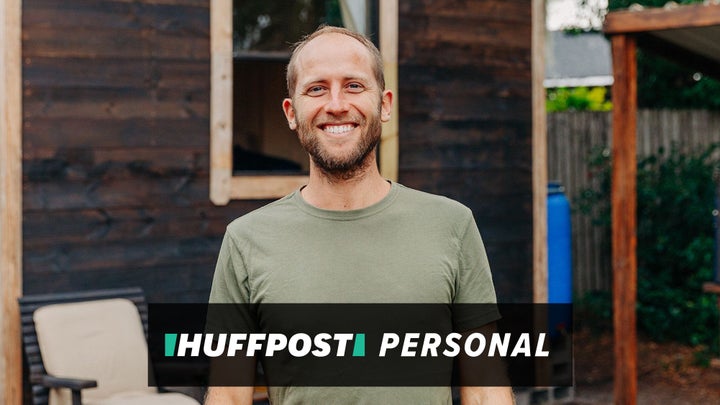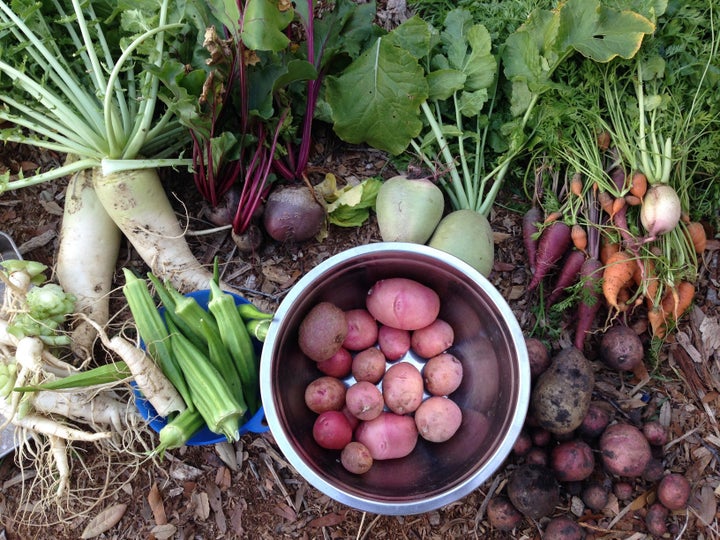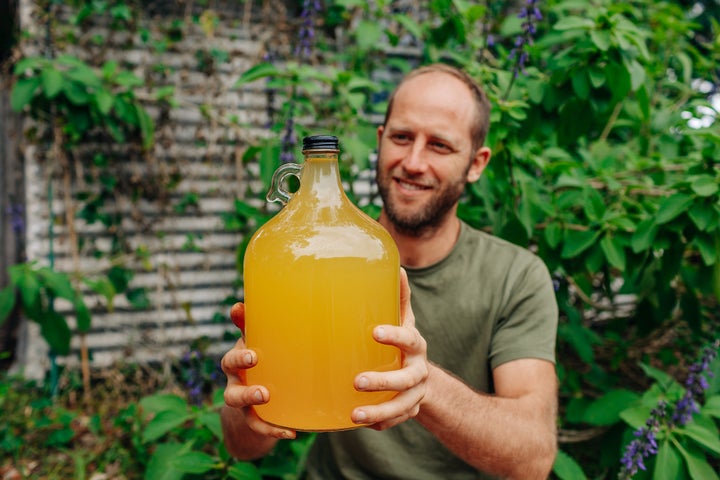
I’ve always been attracted to extreme environmental challenges that push me beyond my comfort zone. For 30 days I wore every piece of trash I created, I’ve cycled across the US on a bamboo bicycle primarily fueling myself with food from grocery store dumpsters, and I’ve lived off-grid in a 50-square-foot home in San Diego, California.
As I’ve done all this I’ve become increasingly fascinated by our food system, from the fact that we can get out-of-season strawberries or watermelons any time we desire them by just going to a store to the crazy amount of food we waste (much of it perfectly edible) and the plastic packaging all this stuff comes wrapped in.
For my latest challenge, I wanted to find out if someone with minimal food growing experience such as myself could grow and forage 100% of what they eat for a year – in my case, someone living in a modern US city. And I mean 100% – no grocery stores, no restaurants, not even a pinch of salt from a friend’s pantry.
First and foremost, I needed somewhere to live that had outdoor space in my new home city of Orlando, Florida. This was quickly resolved when I went to an herbal conference and met Lisa, a 62-year-old Orlando resident who had a lawn that she worried was going to waste.
Within several months, some friends and I had built a 100-square-foot house out of repurposed materials in Lisa’s backyard, and I had started to turn the empty surrounding space into an edible landscape. Instead of rent, Lisa gets to eat as much of what’s growing as she wants, and the garden and tiny house are hers to keep even after my time here is over.

Some people might think that, in doing this, I’m living completely moneyless. That’s not the case. I do public speaking about sustainable living to earn the little bit of money that I need to get around and buy the occasional new things I require, including garden tools and other supplies.
Growing and foraging all your own food when you’re starting with an empty lawn needs preparation. I began with lots of reading, joined a local permaculture group and visited a couple dozen farms and gardens to build up my knowledge. I sourced sweet potato slips from the dumpster at the neighborhood plant nursery, purchased cuttings and seeds from local food growers and traded skills I have in things like social media in exchange for guidance and plants from a local growing expert.
I spent a lot of time online learning about what is and isn’t edible, not to mention pretty basic stuff like how much water different plants need and what to plant when and where. If I didn’t get this stuff right, I’d have a lot of hungry days ahead of me.
It took ten months to get to the point where I was ready to start my yearlong project. I’m now just over a third of the way into the challenge and, looking down at my dirt covered hands as I type this, I realize how much has changed in such a short space of time.
The shelf beside me is piled high with grapefruit, oranges, lemons and starfruit. Right outside my window, I can see honeybees, and the garden is packed full of greens like kale, Swiss chard and collards. I’ve currently got more papaya than I know what to do with.

I’m also foraging for food, which you might think would be hard to do in a city. But wild food is growing abundantly in so many places in Orlando. Earlier today, I picked loquats from a tree in a public park and Surinam cherries that I found in a hedge.
I harvest wild, invasive yams that grow between the edge of the nearby golf course and the bike trail, and often venture beyond the outskirts of the city to source salt and fish from the ocean. I’ve also tried foods I’d never even heard of before, like the monkey oranges some fellow foragers introduced me to the other day in a forest near their land.
I’d be lying if I said it’s all fun. I miss olive oil and bread, and although I grow at least 20 herbs and spices like basil and turmeric, I long for the flavors you can get from store-bought condiments. I also still haven’t yet made enough oil to be able to fry some of my meals, although I have coconuts ready to make coconut oil when I get the time.
The main thing I’m missing though is convenience. Being food self-sufficient means spending many long days working from morning until night to harvest and forage. After a long day in the garden, there are times when then needing to spend an hour in the kitchen preparing a meal is the last thing I want to do. These, however, are just minor downsides. One-third of the way into this challenge I’ve set myself, I’m still here and happy and healthy.
Aside from the personal challenge, I’m doing this because I want to inspire people to think about what we eat and where it comes from. That doesn’t mean I think we all need to grow all our own food. It could be as simple as planting a small herb garden on a balcony, turning a front yard into a garden, or supporting local farmers at a nearby farmers’ market. However differently people approach it, one thing is certain – we can’t keep going on with our current industrialized food system forever.
This article first appeared on HuffPost US Personal.
Have a compelling personal story you want to tell? Find out what we’re looking for here, and pitch us on ukpersonal@huffpost.com